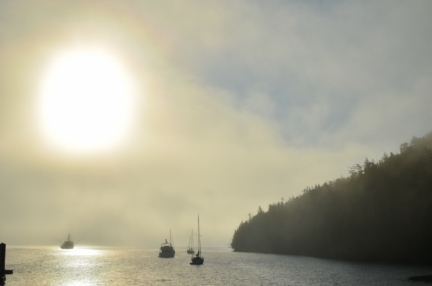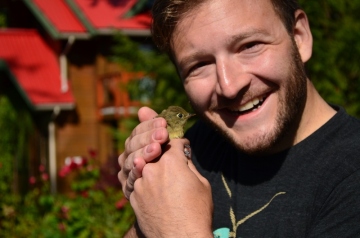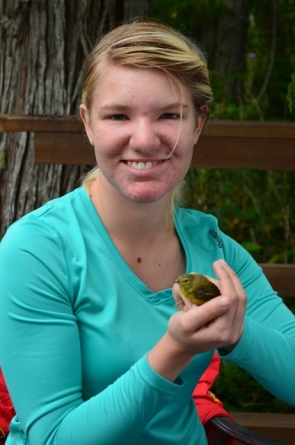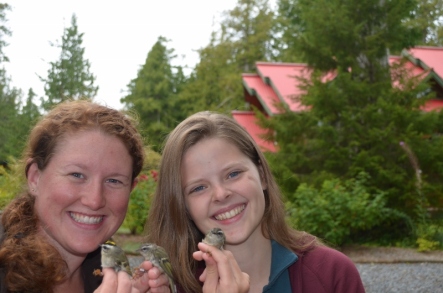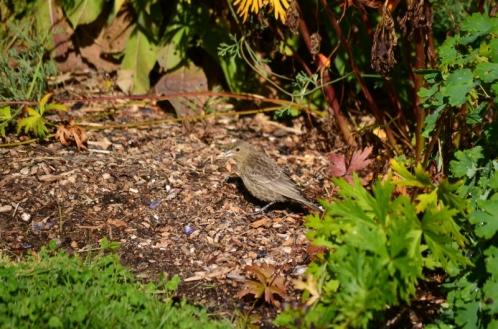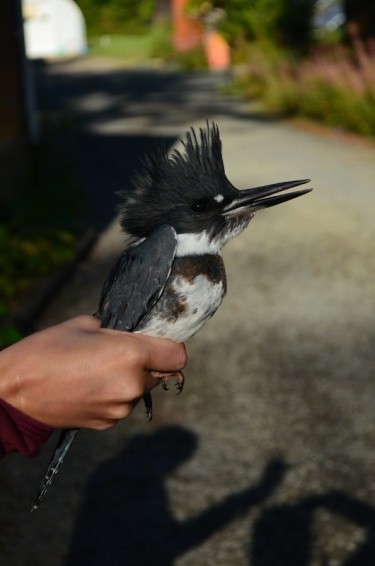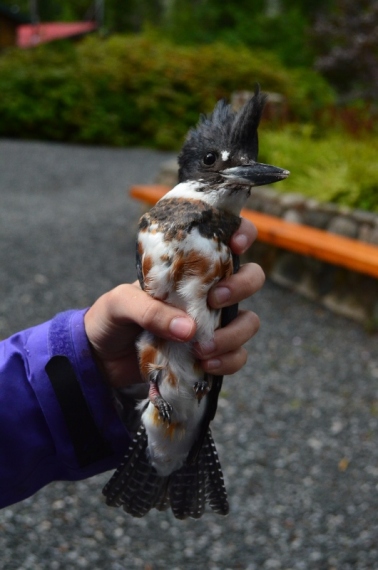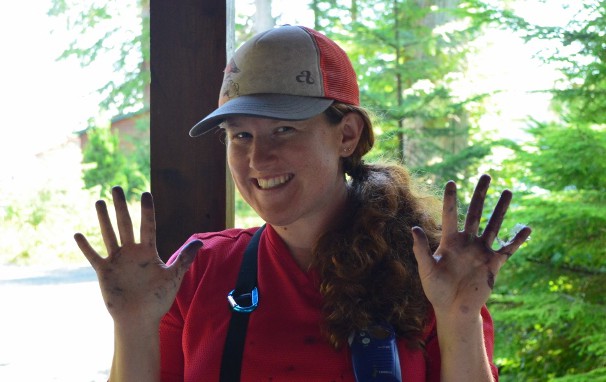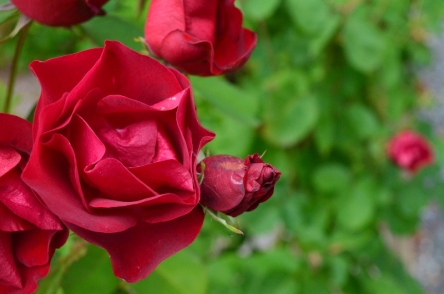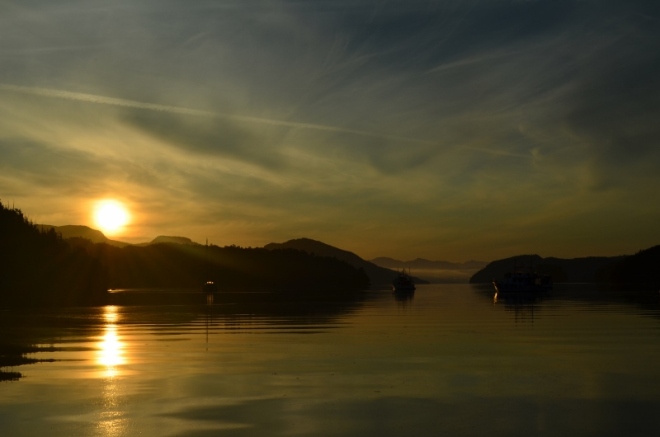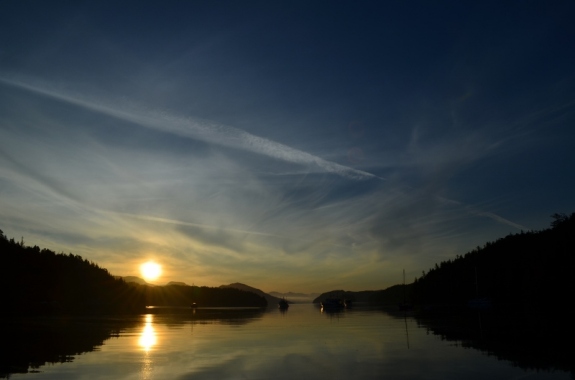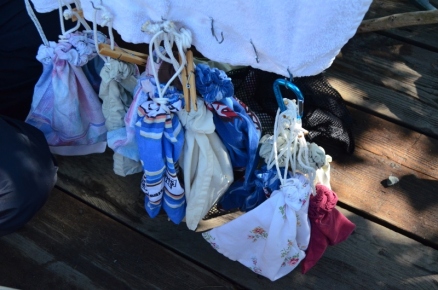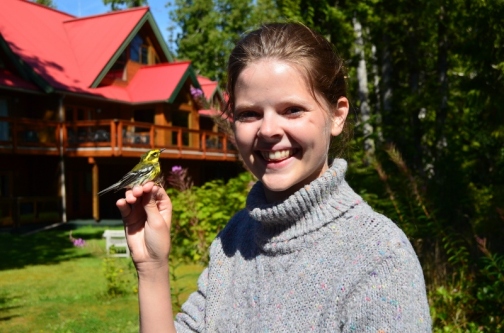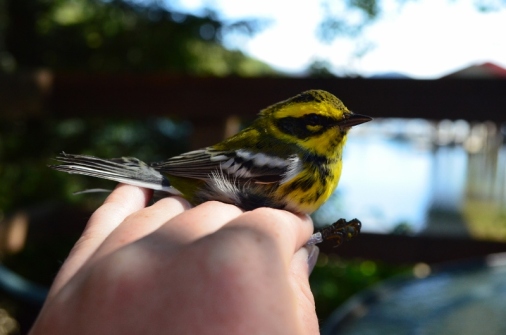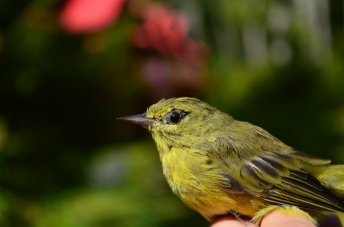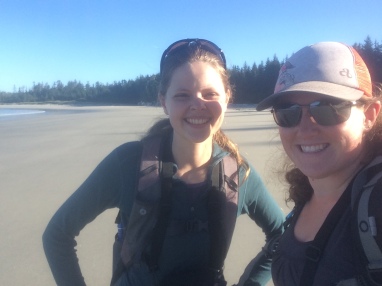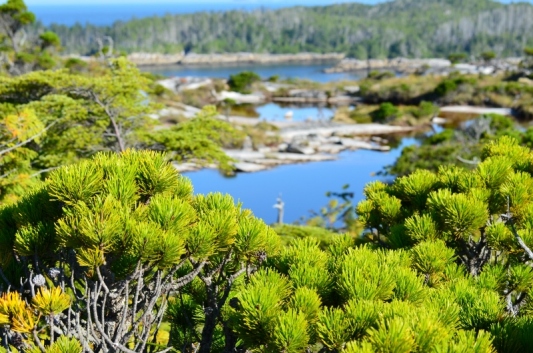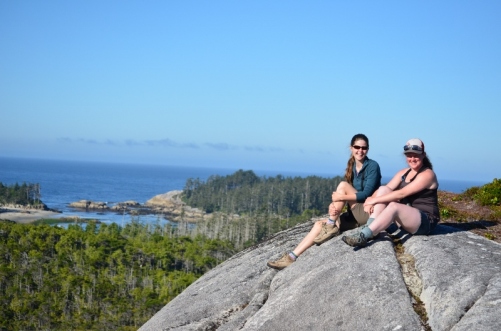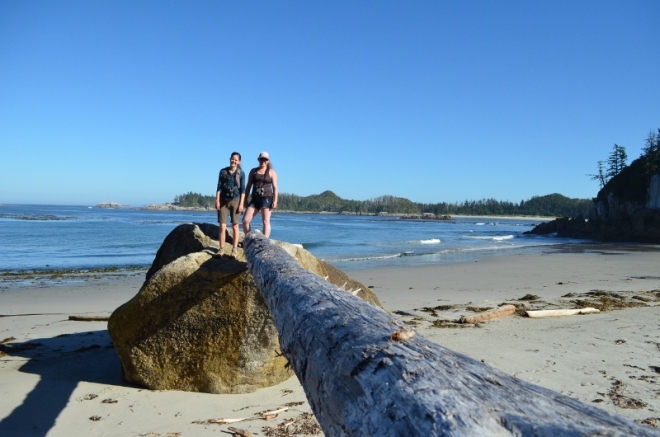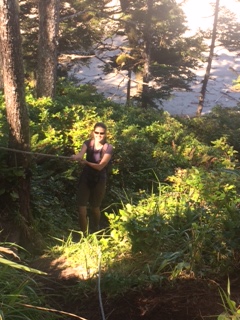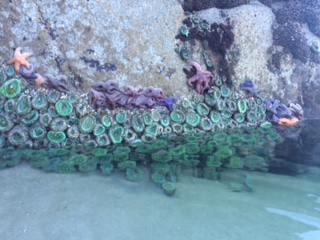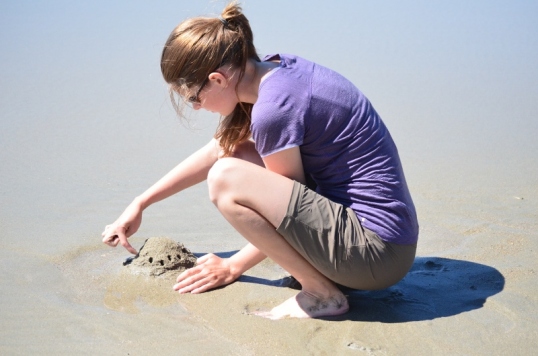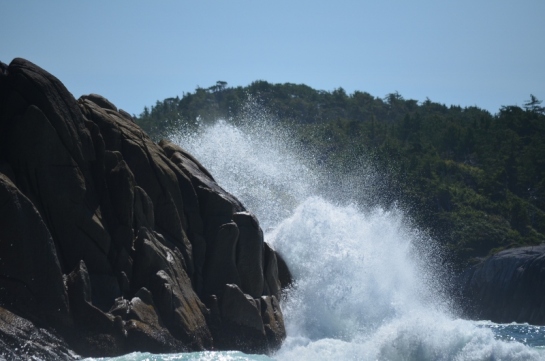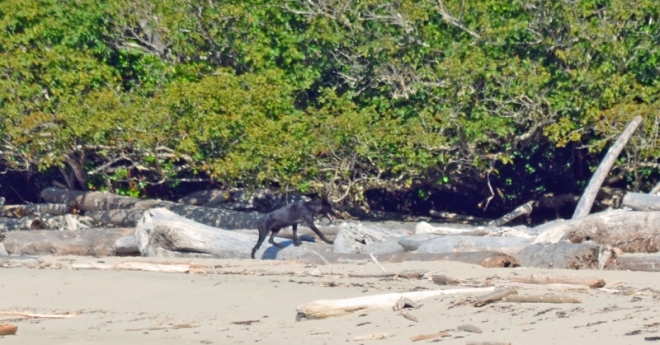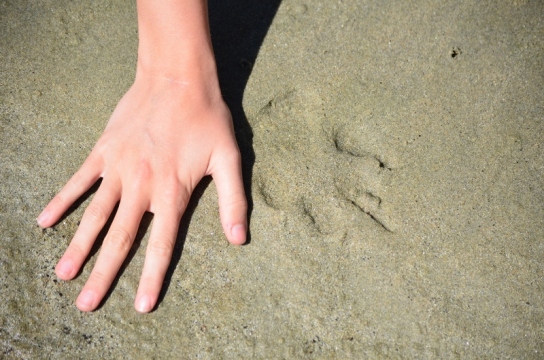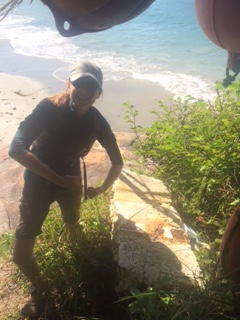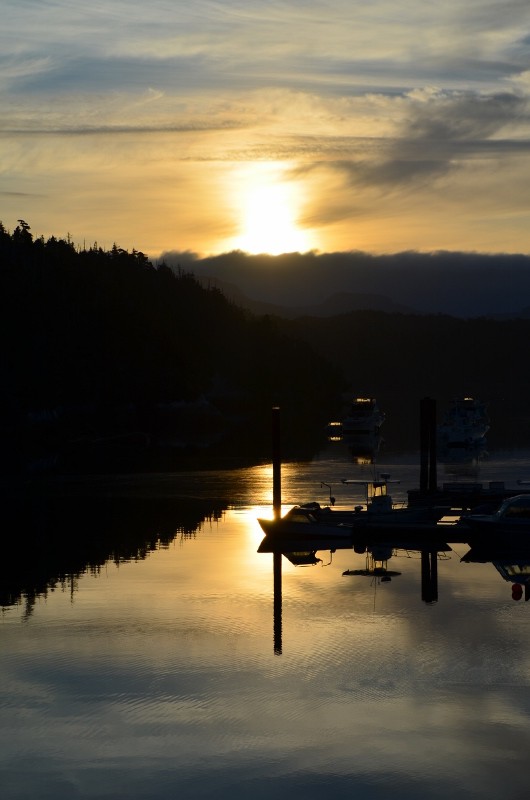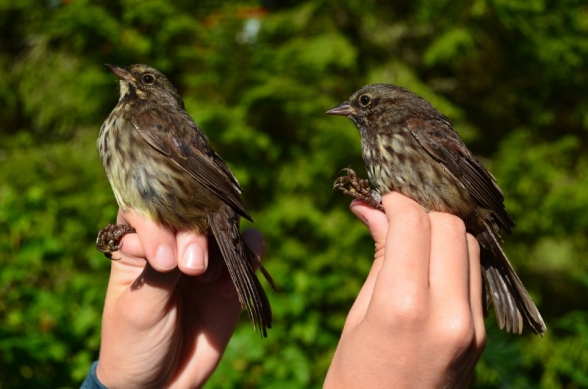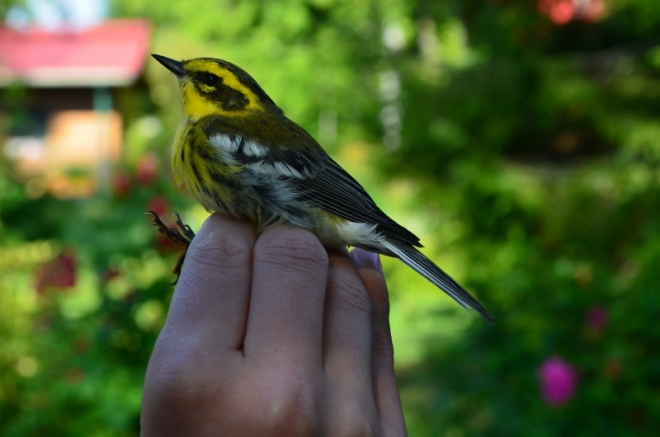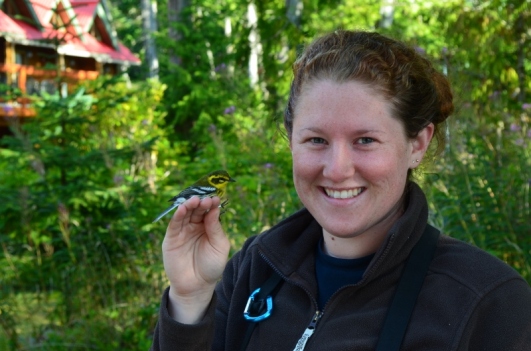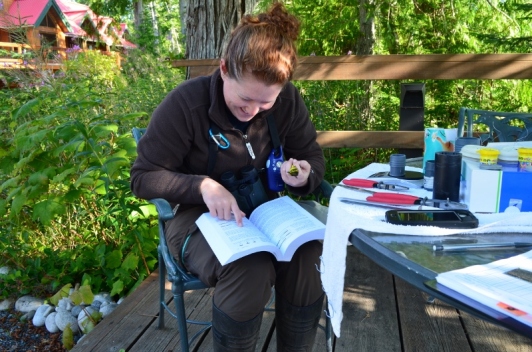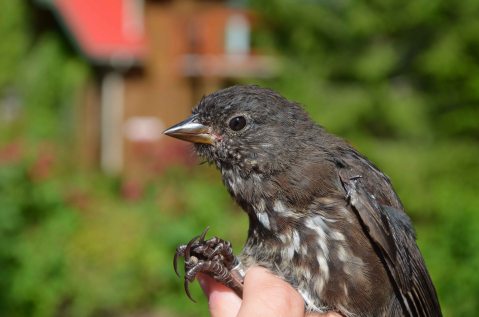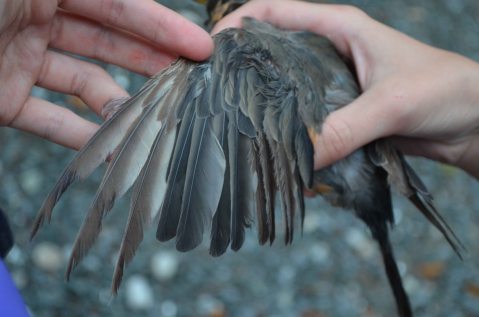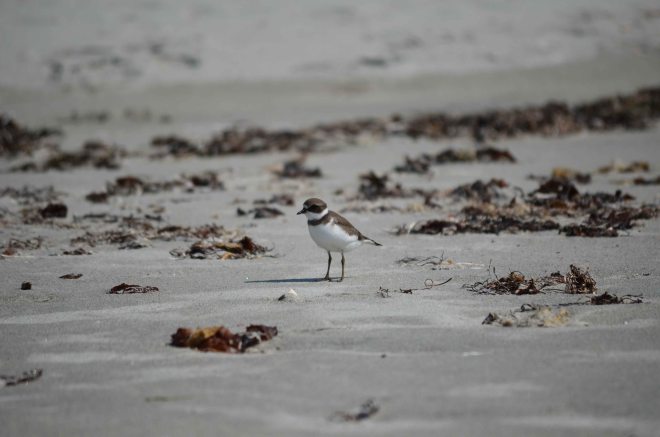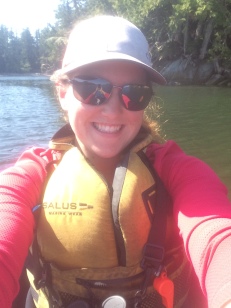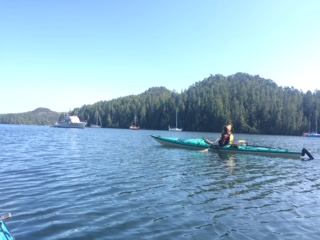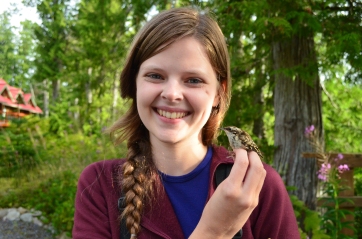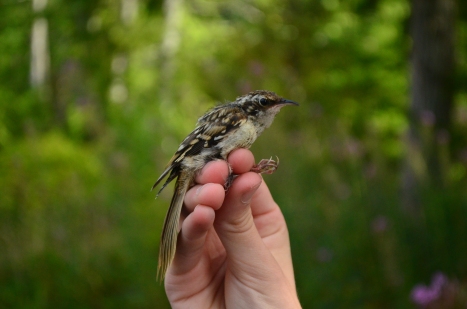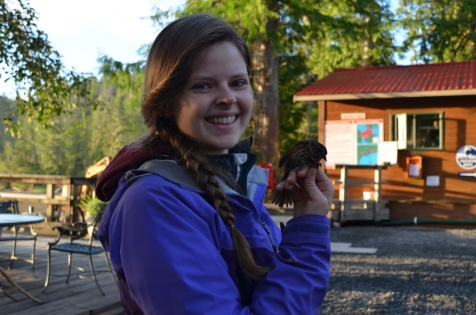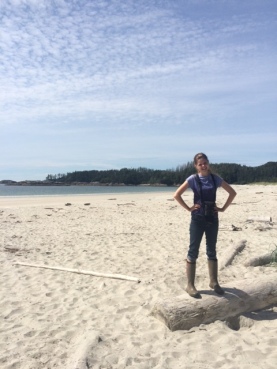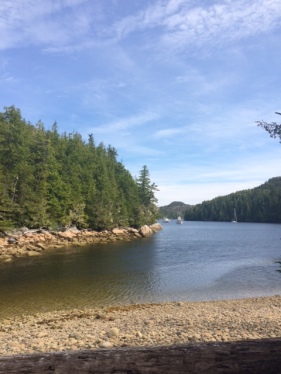WE CAUGHT A KINGFISHER TODAY!!!! AND IT WAS THE BEST THING EVER!!!!!!!! It was totally fabulous and magical and everything I have ever dreamed it would be!! I’ve been dreaming about banding a Kingfisher for quite a while actually – last year I did an independent research project on their intestinal parasites, and got to age/sex, etc., a lot of dead ones. Ever since BEKIs have topped my list of dream birds-to-band, and I’ve been angling to catch one for months now.

Elsie and her Belted Kingfisher
The morning started out with lots of frustration first though. As Kim and I were opening the last few nets a chattering Kingfisher came buzzing right over my head, at exactly net height. Alas, I failed to catch it, as my net was only half open, and it had flown through the half-closed portion – if only I hadn’t dallied with the Robins earlier it would have been mine!! Kim attempted to soothe my disgruntlement by telling me that if a bird almost hits a net once, it will definitely hit a net soon (I didn’t totally believe her though). I got over the letdown though, and we continued with the morning’s banding, although in my head I was concocting outrageous plans for Kingfisher trapping, including, but not limited to, playback attempts, net cannons, baited nets, or just a realllllly long butterfly net.
The morning was slow but sunny, and as the day drew to a close, I was in the middle of furling the forest nets when Kim’s voice came over the radio saying “Guess what I have for you Elsie?”. Needless to say, I started vibrating with excitement almost immediately, and finished closing my nets as fast as is humanly possible before running over to see my bird. I didn’t quite believe it was real until I opened the bag and saw it’s sassy little face staring up at me. There was much jumping (prior to holding the bird, of course), general excitement, and a small amount of squealing before I settled down into banding my first ever Kingfisher!!!!! The timing was perfect, with not other birds to process, and no nets to check I could really savour the moment, and fully appreciate this stunning little bird. He was a beautiful HY male, with some serious personality, he kept his mouth wide open ready to bite anything that came his way, and his mow-hawk raised to it’s most threatening height. It didn’t have quite the intended effect however, while it did make him look all spunky, he was also just adorably cheerful with his wide-mouthed grin.

Stunning Belted Kingfisher!!
He behaved himself nicely, but also proved to be a bit of a challenge aging-wise. My previous experience with BEKIs have all involved dead birds, most of which didn’t include a date of death, making aging them a bit of a challenge. This young fellow had lots of rufous in his upper breast band, a young-bird trait, and the black markings along the shaft of S6 were thick, both traits of young birds. But his central rectrices had almost no black along the shaft, and looked very much like an older males. Some young birds do molt their tail very early though, and he appears to be one of them.

HY Male BEKI wing
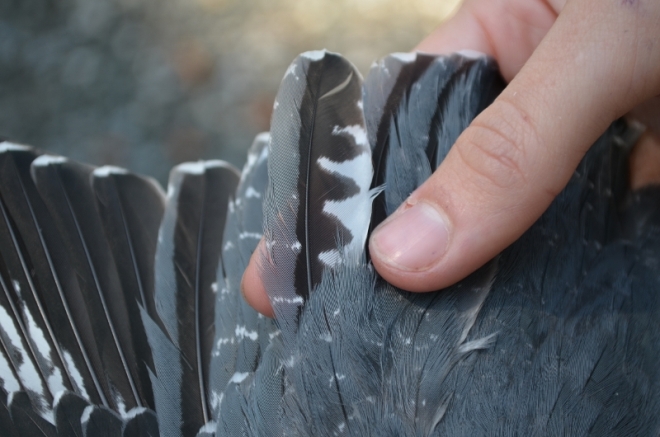
BEKI p6 – the amount of black along the shaft indicated an HY bird
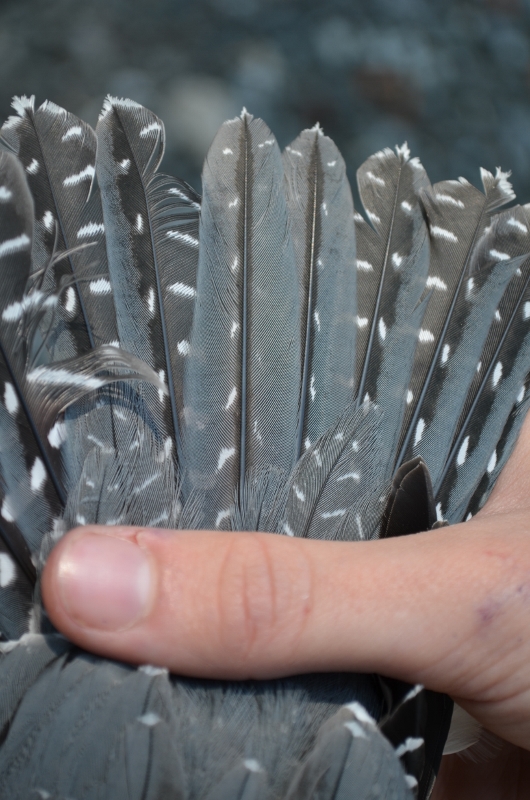
Central rectrices (tail feathers) of the BEKI – little black along the shaft indicates these feathers were grown recently as they are more typical of an adult bird, but this Kingfisher was a juvenile!
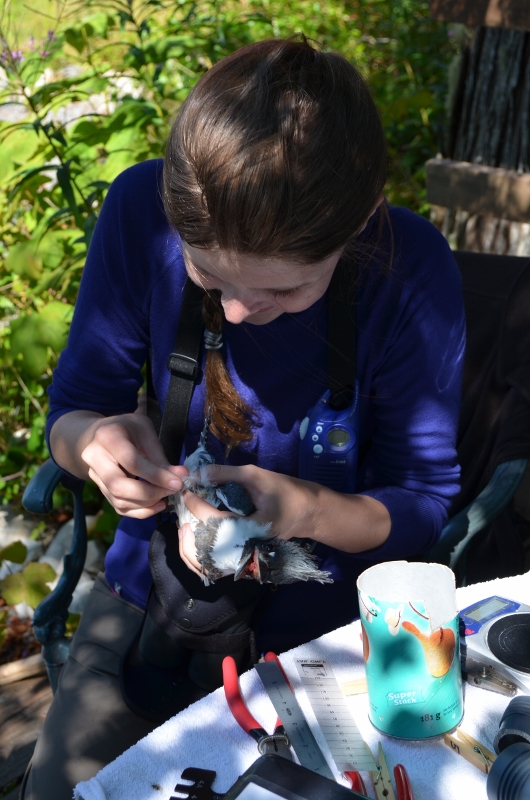
The Kingfisher was so excited for his band! (Or maybe just wanted to bite the pliers on the table)
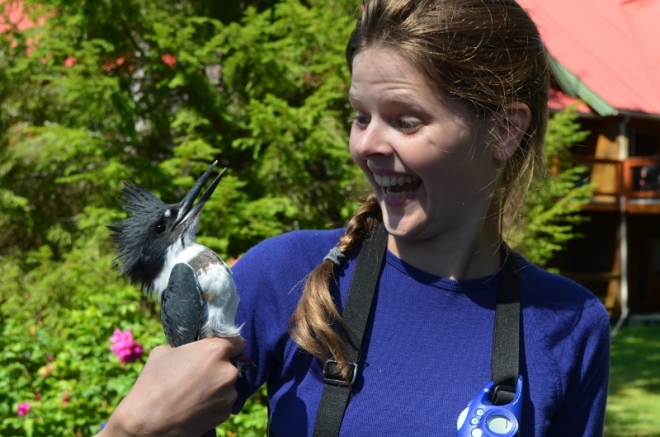
He’s as excited as I was!
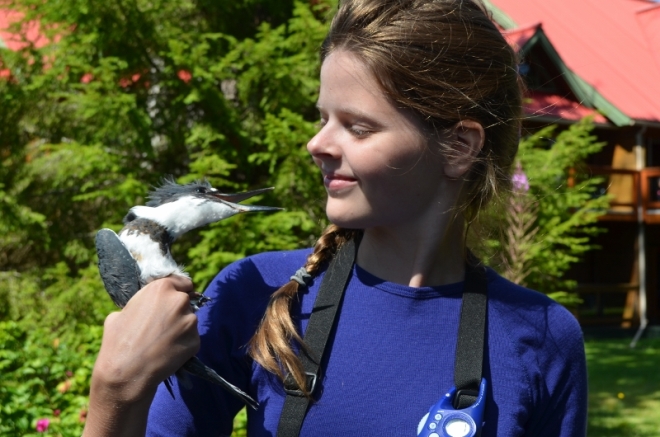
We became good friends (or he just wanted to bite my face…)
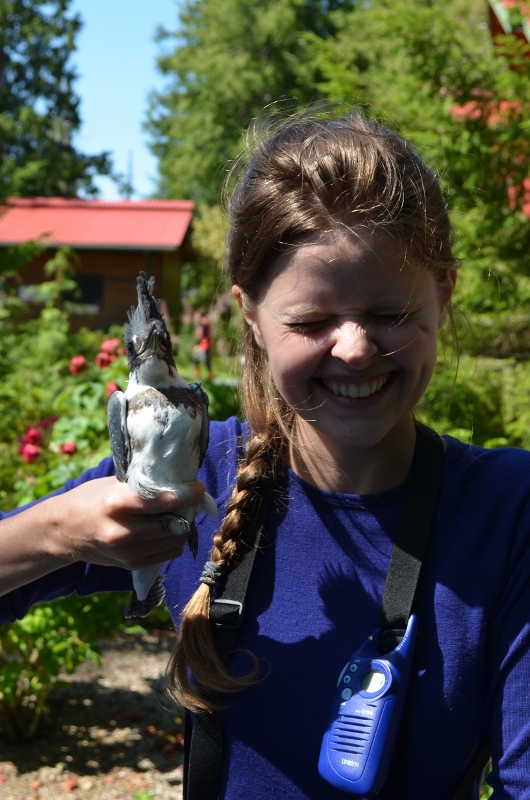
We laughed together
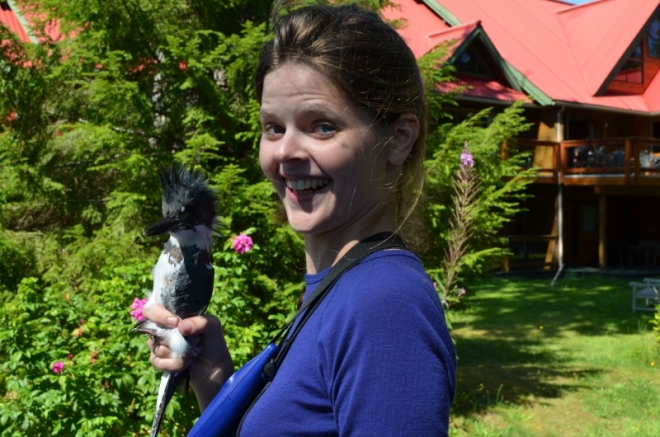
We even posed for pictures together
Banding the Belted Kingfisher is probably the highlight of all my time on Hakai so far – they are just such charismatic birds, and I’ve been waiting for this day for so long!!! (And yes Eric, this means if we get one at Buttertubs now it’s all yours!)
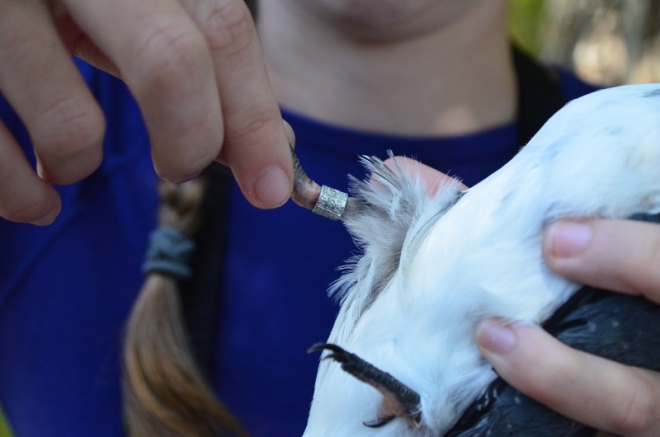
Just look at that band!
We banded more than just a Kingfisher however (even if he was the most stately fellow to come through our station so far). We had lots more Oregon Juncos, a few Orange-crowned Warblers, and even a Wilson’s Warbler popped into nets today!
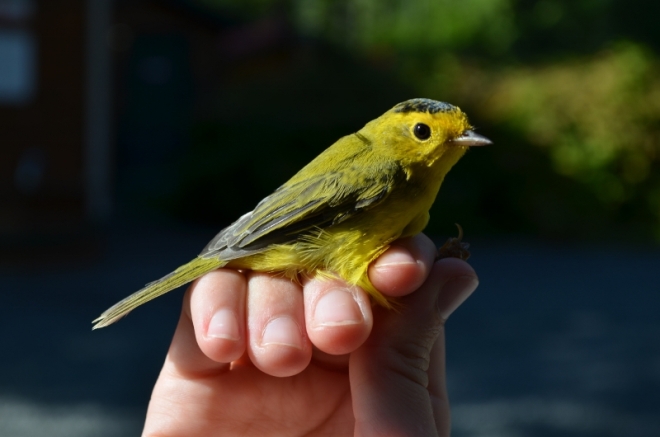
Cute Wilson’s Warbler
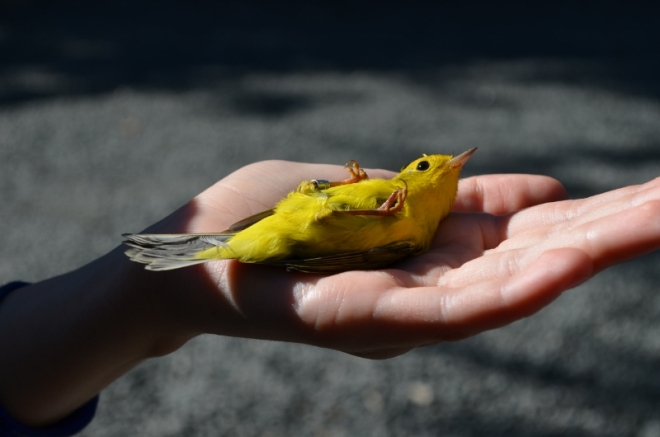
WIWA decided to stick around a bit
Also a bit of an oddity was a very dark Song Sparrow – possibly just a strange hypermelanistic morph, but maybe an unusual subspecies? Either way, it definitely stood out, especially when compared to the more typically-plumaged sparrows.
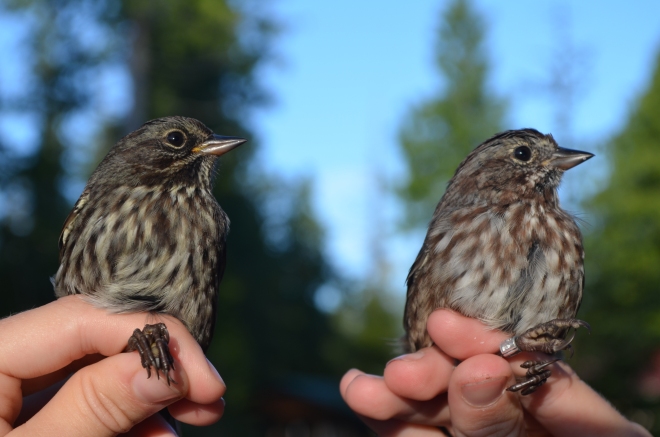

Very dark Song Sparrow


